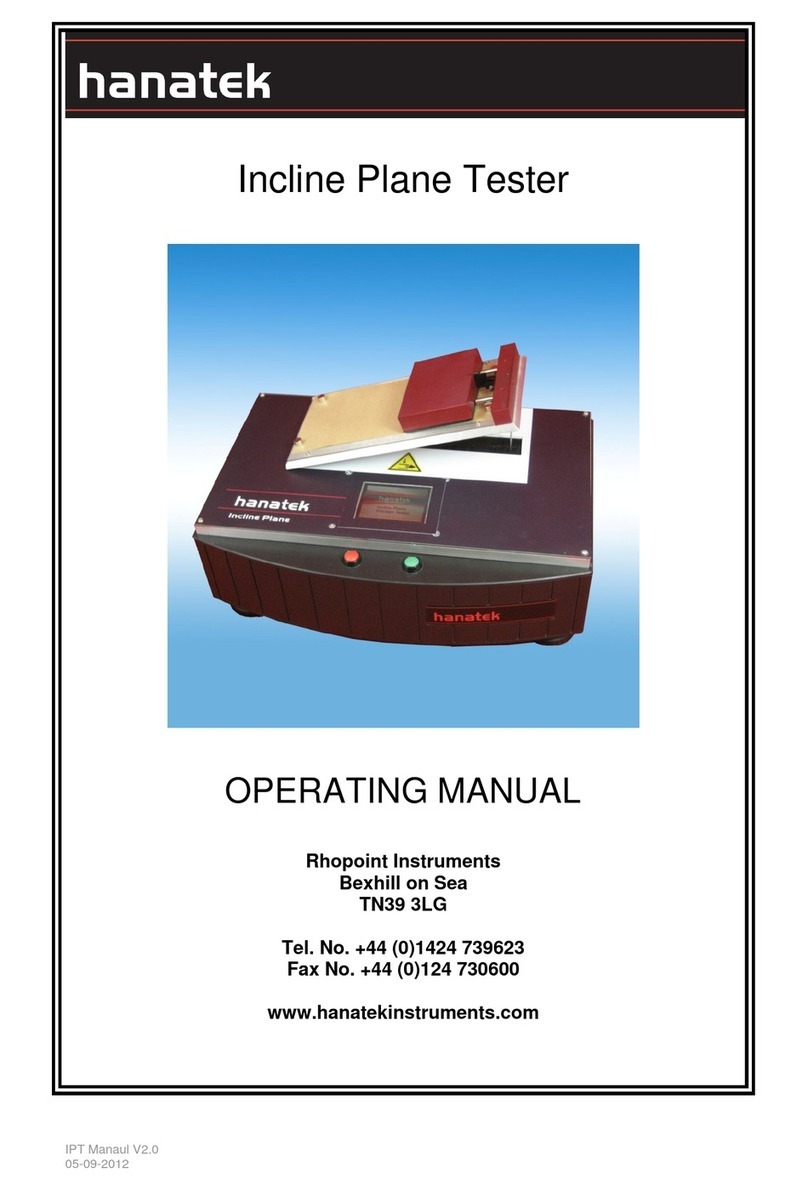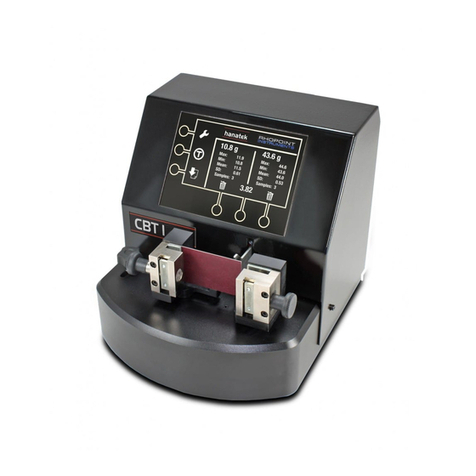
AFT Manual V2.2
10-11-2016
Who measures slip/friction?
Friction testing is extensively used in the packaging industry to measure the
“slippyness” of a product, with the aim of predicting feeding and runnning
speed on an automatic gluing, erecting, filling or packaging line.
Other industries that test for slip include the paper industry (for the automatic
feeding of photocopy paper, envelopes and banknotes), flooring manufacturers
(for the anti slip properties of polishes), plastic manufacturers (the frictional
properties of packaging).
What is slip/ friction?
A products "slipiness" is characterised by it's coefficients of friction-
Static coefficient of friction = Fs/N
Dynamic coefficient of friction = Fd/N
Where Fsis the maximum static frictional force and the Fdis the average dynamic
frictional force. N is the Normal force, ie the force of gravity acting on the sample
and test sled.
In practical terms, the static slip relates to the force required to get two resting
surfaces moving, dynamic slip is the smaller force that is required to keep the
surfaces moving once this initial "inertia" is overcome.
These values are expressed as ratios and do not have units, they are quoted as
a decimal value between 0 and 1, for example a surface might have static slip
coefficient of 0.35 and a dynamc slip coefficient of 0.18.
How is Coefficient of Friction Measured (COF)?
All methods of COF measurement involve preparing a sample into two flat
pieces, the samples are placed together and a weight is applied (the normal)
force. One of the samples is held in a fixed position, a force is applied to the other
sample until they begin to slip against one another.
Flat Bed Friction Testing
To measure Static and Dynamic coefficients of friction it is necessary to use a
fixed bed instrument. These instruments use a motor to pull a sled across the
sample, using a load cell to measure the forces.
Original slip testing instruments were converted tensile testers that used a cord to
pull the sample. The use of a cord has now been removed from most friction
measurement standards due to the uncertainty added by its own elasticity and
problems with sample positioning.
The Advanced Friction Tester from Hanatek uses mechanical linkages to apply
the force and uses automatic sled placement for very accurate sample
positioning with variable dwell time before testing.





























